In this article, you’ll learn:
This is a really long and thorough material where almost 30 most painful questions are answered. I recommend making a tea or taking some popcorn.
Introduction
I don’t consider myself a professional photographer, rather an amateur. The things I am going to tell you about are not established facts or axioms. I can be wrong somewhere along the way, but these are just my thoughts regarding landscape photography.
I will stress that, of course, someone’s story will never compare to your own experience which comes with time and practice. You need to try to photograph more and look at others’ works as similar plots or moments can take place to some extent in your real life. And if you are a beginner, this can help you to learn some basics of landscape photography composition.
In general, there is a common stereotype that landscapes are easy. I will not agree with such a view. It’s easy to photograph a location, but it’s much more difficult to convey this to your audience (your feelings, nature’s beauty).
It’s even more difficult to convey to an audience the plots that are generally accessible and usual to lots of us. If we consider photographing in exotic places or countries, then these pictures will seem more interesting than the view behind the window to lots of people. You will certainly agree that a Bedouin will show much more interest in a trivial photograph taken beyond the Arctic Circle than in a photograph of dunes that he saw million times.
On one of the forums I came across a phrase: “A photograph has to make you go crazy. And this “you” is not an author, it’s audience…” If an author managed to convey his impressions of the moment to audience, then his work can be called successful. To my mind, the main goal of a landscape photographer is not only to spot something interesting and original but also to convey it to people.
To catch a certain “wow” and to show it. To some extent you can say that a landscape is a photographer’s state of mind and soul.
It’s no secret to anybody, the questions like “What did he use to photograph that? What camera? And what lens?” are pretty common. As it seems to me, a good landscape consists of many components, not just camera and lens.
Besides those, technical components also comprise a tripod, different filters, and shoes/clothes. Natural factors are location and good light (you can also put here weather, time of photographing etc.), visual factors comprise composition (perhaps, this is the most important and the most difficult thing).
Now about everything in the order… I will begin with the easiest thing: photography equipment.
Because if we try to prioritize, the main components in a landscape are composition and volume, the second difficult and unpredictable ones are location, light/weather and the third one (to some extent the easiest one) is photography equipment. Why did I prioritize these components in such an order?
Because this article is mostly for beginners who have a camera, want to try landscape photographing, and maybe seek for some advice. As we know, nobody is born “with a camera in hands”
About cameras
It’s the easiest part. DSLR cameras and interchangeable lens ones are accessible to lots of people. In general, this is no secret to anybody that DSLR cameras have become widespread for the last few years, and their price is more than acceptable at the moment. In my opinion big advantages of a DSLR camera are its matrix/resolution, accessory lenses and how comfortable to hold it.
I have read quite a few articles that stated that you need to have optics of a middle and upper range in order to photograph a landscape. I personally disagree with this. Yes, a good camera and good optics are a big advantage in skillful hands.
But you can photograph a landscape not only with the help of the most expensive camera and you can use your kit lens. If you don’t need a big size print, then cameras like Nikon D90 can easily satisfy most of your needs (at the moment this is the model I have). Or if you’re a Canon guy try go with Canon 50D.
When somebody asks me: “What’s more important - a camera or a lens?”, I will answer: lens. If you ask me what’s better: a good camera or a cheap lens, or vice versa, a cheap camera, but a good lens - I will choose the second option. But even if you buy a good lens, I will repeat, it doesn’t guarantee good results.
Though you can strive to buy a good camera and a good lens, and even have to. Of course! It’s just that this purchase won’t be a panacea to get good pictures on its own. And some advanced “point-and-shoot” cameras can also help you have a good outcome. And not only within the web gallery, but also in print. Moreover, to some extent Sigma products on matrixes of the “foveon” type are a very good solution for a landscape photographer. But this is already another topic…
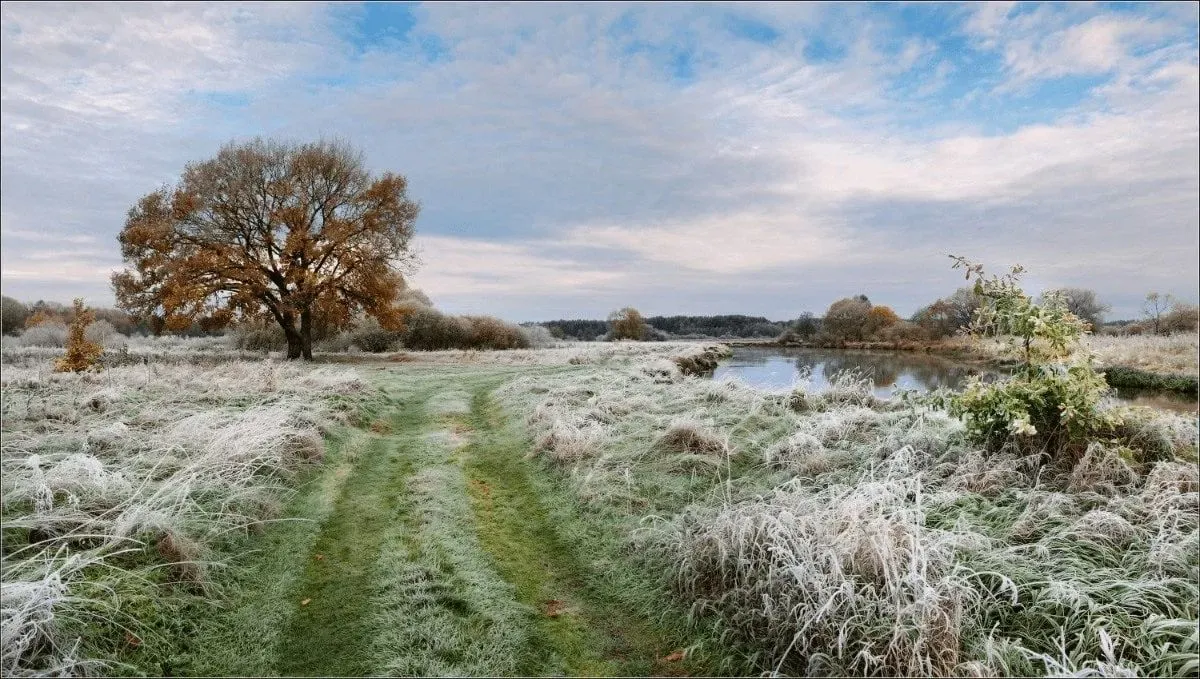
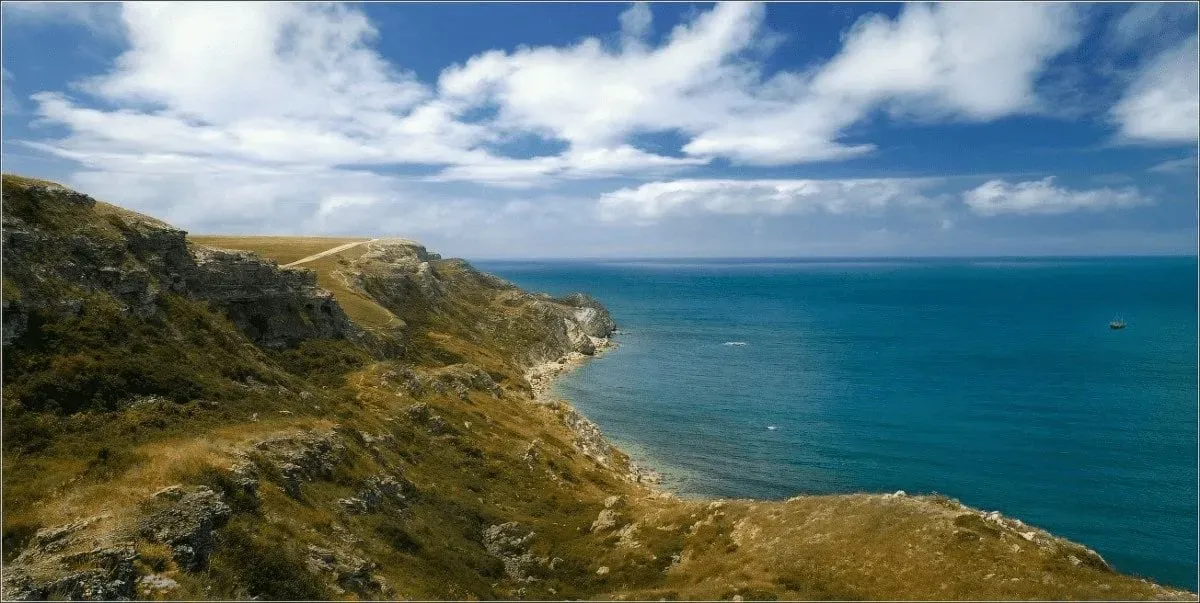
In general, if we draw a conclusion about cameras, there are no particular preferences as to photographing landscapes. A statement, that you need to photograph a landscape exclusively using this or that is wrong.
You can take relatively the same picture under daylight using practically any camera: a full-frame one, a crop one, or an advanced “point-and-shoot”. It is a photographer who shoots a picture, not a camera. A good camera is a tool with possibilities that you can wisely use.
And one more important detail about a crop camera and a full-frame one: transition/purchase of a full-frame camera will involve buying lenses for a full-frame. Keep that in mind. And their price can be much higher in comparison with the lenses for a crop...
About lenses
If you divide lenses into groups (superwide-angle, wide-angle, standard and telephoto ones), then the ones I hardly ever use are the standard range (within the limits of 50 mm). The ones I use most of the time are 10–12 mm (most of my pictures are done with these ones). And I have widely used lately long-range ones of 150–200 mm, although earlier, I haven’t even considered those for landscapes.
At the moment I have two lenses to shoot landscapes: Sigma 10–20/4–5.6 and Nikkor 70–210/f4. In general, they almost satisfy my needs at the moment, though several times I needed a lens with intermediate range close to 35–50 mm. At the same time I have used Nikkor 18–105mm f/3.5–5.6 and I haven’t done any remarkable pictures using this range.
I won’t disclose any secret if I say that I use wide-angle lens much more often than a telephoto one. I will even put it this way: a wide-angle lense is the most called-for to shoot landscapes. There are many reasons for this, one of them is that it allows to catch well a foreground and also to emphasise a perspective. And in addition limited space for shooting and a relative remoteness of objects make it irreplaceable.
Yes, under certain circumstances, you can try to go without it, taking 2 or 3 long-range pictures instead of 1. But still you won’t be able to replace it completely. In addition (for me personally) DSLR cameras have their specific look, sometimes related to geometrical distortion. For example, I like their distinctive X-shaped “dispersion” in a picture when objects do as if they rush to the borders of the frame.
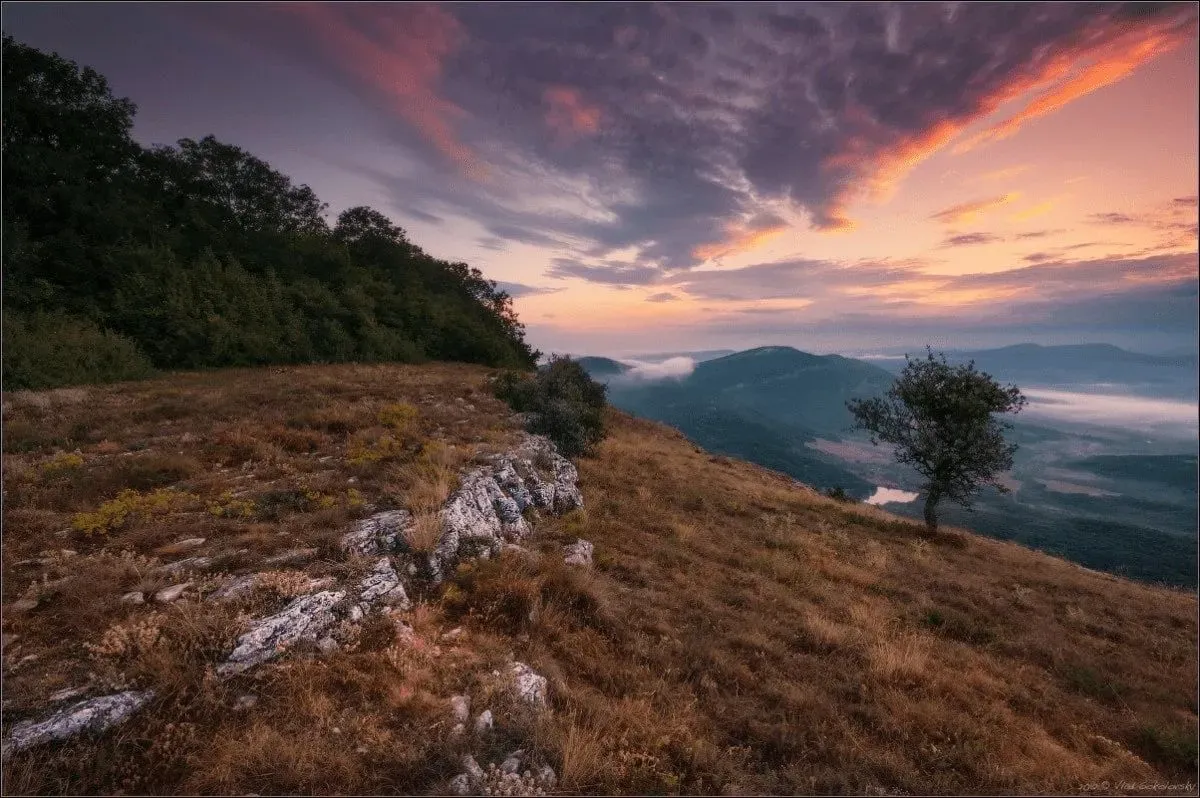
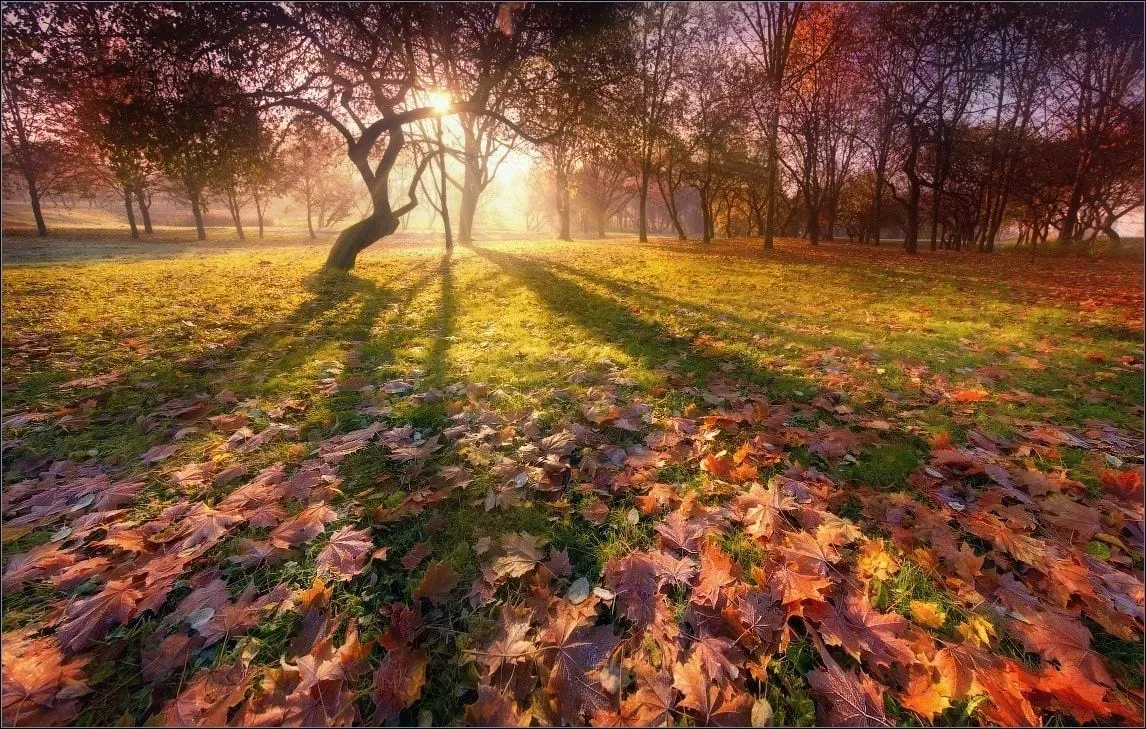
But again, it’s all relative. Perhaps, somebody doesn’t accept at all distortion and corrects it every time he sees it. So this can be also counted as a disadvantage of a wide-angle lens. And as a consequence, it can be sometimes more difficult to build a panorama shot at 10mm range because of distorted images.
So why did I choose to buy a Sigma wide-angle lens? I personally don’t hold any prejudice against using lenses of third-party companies. Moreover, I had a possibility to shoot using this model which was borrowed from two other people. I don’t have any complaints about its quality. To my mind, it’s the best wide-angle lens in terms of a quality-price-range ratio.
As for a telephoto lens, I started using it only recently. But having discovered its specific appeal, I am now using it quite extensively. Its biggest advantage is that a telephoto lens allows to “cut” an object from the background and emphasize it. Shooting with a telephoto lens gives a specific image: perspective shrinks heavily. Geometrical distortion is practically absent. Also, another advantage is that a telephoto lens can shoot objects that you cannot easily reach.
Its disadvantages are a certain limitation in usage because of a distance lack and a small viewing angle. And I also think that it’s necessary to have a tripod when using a telephoto lens. Yes, you can have a good picture without a tripod. But, nevertheless, I would use it anyway.
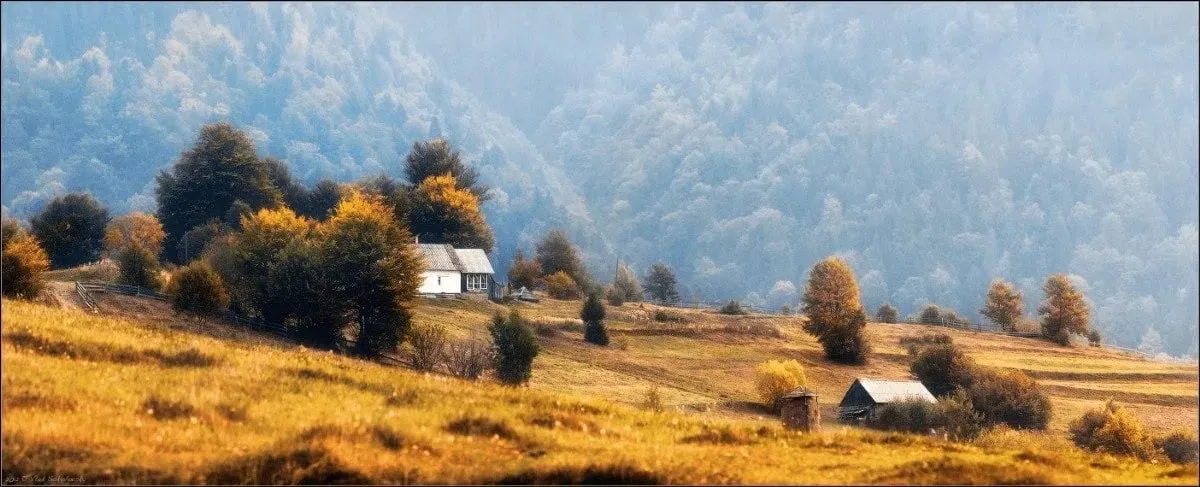
What I would like to add: possibilities of a telephoto lens are not unlimited. A lot of people think that if they buy it, they will shoot objects at remote distances (for example, a tree located 500 meters away). It’s not quite true: you can shoot it, but natural fog can “eat” all these details.
As for the question “fix” or “zoom”… A lens with a fixed range will give better results in the same conditions. As for comfort during shooting - here the winner is a zoom lens. You cannot always change a lens fast. Plus an additional pair of lenses will take extra space. You shouldn’t also forget about the financial side of the question: price of several fix lenses will equal a price of a good zoom lens. And if you add filters... So in general to buy a fix or a zoom lens is totally your decision. They are both suitable for shooting an appealing landscape.
About tripods
«Photographers taking landscape pictures can take pictures only twice a day - at dawn and at sunset. If you have no problem with this, then it’s time for you to hear another important secret: you should always use a tripod. Every single day. All the time. There are no landscape pictures made without a tripod... One morning you will certainly see an amateur next to you who is making the same pictures as you, but without a tripod. Do you want to save a lost soul? Without saying a word, take a tripod and hit it against his head”.
Scott Kelby (author of some clever books on digital photography).
Do you need a “stabilizer” when shooting landscapes? To my mind, it’s not necessary. It’s better to have a tripod. There is a phrase: “A tripod is the best image’s stabilizer”. Do you need a tripod if you shoot at short focal lengths when a risk of blurring is extremely low? I think that you still need a tripod.
A tripod is irreplaceable in dim insufficient light, shooting at long exposure and capturing panoramas.
What is “a good tripod”? Well, the best tripod is a tripod that is heavy enough to carry it around. Okay, without joking the best criterion to choose a tripod is that it should be stable. To some extent a tripod has to be heavy.
Yes, some can object: “Okay, you can buy a tripod that has a central cross-bar with a hook. And you can mount something heavy on this hook”. I won’t agree with this statement: first you need to put this somewhere (you will need to carry a bag). Second, you need to look for something to fill it with, which is not always comfortable. Third, one day you will not find “this something to fill the bag with”.
Certainly, there are products made from composite materials like the ones by Gitzo company. Such tripods will be light and stable. But their price will equal a price of a fair DSLR.
Moreover, at certain moments even the most expensive tripod can lose to a budget one. Two years ago me and my friend were shooting a landscape near Minsk (Belarus) from a ski jumping board. Everything was going well till it got windy. I wouldn’t say that the whole construction was loose, but, nevertheless, there was a small vibration.
And in this case an expensive carbonic tripod behaved in a totally unpredictable way: these vibrations were quite tangible for a telephoto camera. I don’t remember all the details, but we decided to put the camera on a metallic Manfrotto 190XPROB. We did it, and the problem was practically solved. That’s why if you don’t plan on long walks, climbing mountains, etc., it’s enough to have an aluminium tripod.
If you don’t want to carry an extra weight and you don’t plan on shooting night landscapes and water at long exposure, you can buy a monopod. As a rule, they are lighter and their price is lower, and to some extent they are more comfortable and faster to use.
What do you need to take into account when choosing a tripod, besides its weight/material?
In my opinion you shouldn’t buy a low tripod (it’s not always comfortable to shoot from a low point). But at the same time you will unlikely use high tripods (higher than your height) for landscape photographs. As for me a height, where a camera with a middle bar-bell a bit pulled is at your eyes’ level, is just right. It’s desirable to have “folding” shafts (with a changeable angle of inclination) — it helps when shooting, for example, on rocks/inclined surfaces. You won’t use this often, but at a given moment it can be useful.
You shouldn’t spare money on it. I have, for example, a friend who shoots with Canon 5D Mark III + Canon 16–35/2.8. But at the same time he has the most plain tripod, its knees were like matches, it had a plastic head and platform. The aforementioned set was dancing on this construction, it looked frightening, it seemed all this could fall at any moment on the ground and you had to support it with your hand all the time. But my friend was frankly at a loss as to why he had to use another one as this one was very light, plus he uses it very seldom...
In the end, though, common sense won, and he thought about buying a good set of tripod and head.
A tripod has to be equipped with a tripod head, naturally. It’s up to you what to use — a 3D or a ball head. A 3D head has more handles for fixation and it’s more comfortable to shoot panoramas with it, a ball head is faster in use though. For example, I personally use Manfrotto 804RC2 (it’s a 3D).
What do you need to keep in mind when choosing a head? It has to fixate camera well on a tripod and has to have a fast dismantable platform (that is connected to the camera). When fixating a camera on a tripod, a lens shouldn’t “niddle-noddle”. Shooting with wide-angle a small dislocation up/down is not very noticeable… When shooting with a telephoto lens bad fixation will give you a hard time.
And sometimes even seconds can be important. So I am totally a tripod guy!
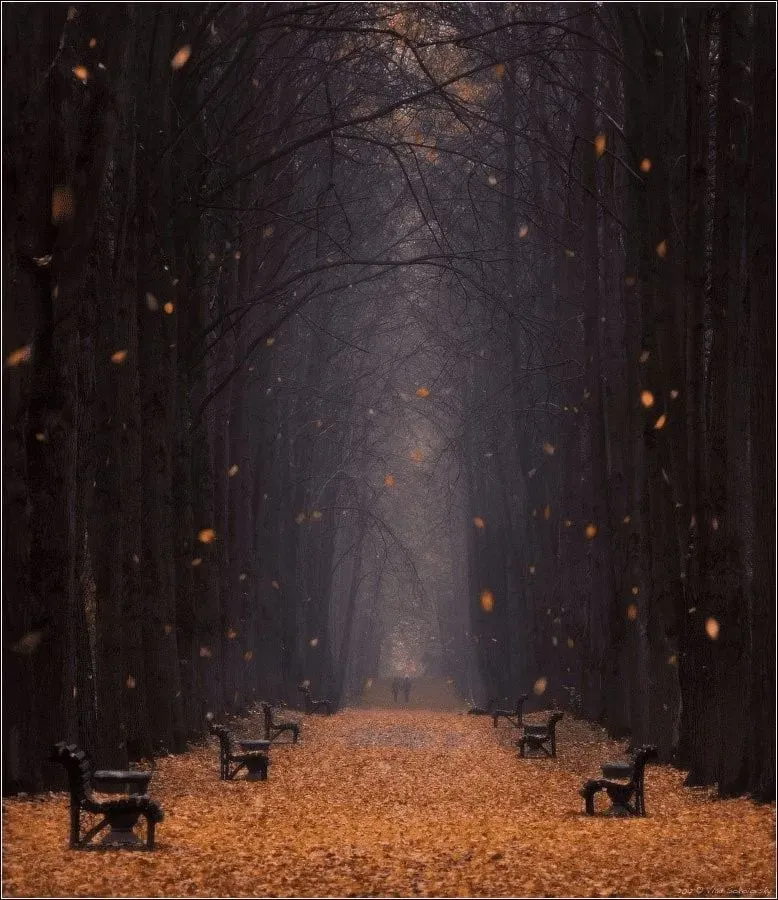
About light filters in landscape photography
To make post-processing easier and to reach specific effects, landscape photography suggests an active usage of different light filters. Filters that can be useful: polarizing, neutral density, neutral gradient.
The filter I use the most is a square-shaped neutral gradient filter Cokin ND2x and ND4x which allows to remove brightness difference between a lower and an upper part of a picture. When there is a small light difference, I use ND2x, when it’s bigger, I use ND4x. I couldn’t decide for a long time to use these filters because of their specific way of fixation to a lens, but in the end I have started using them.
Before that I was using round-shaped neutral gradient filters by B+W and Marumi. They are easier to put on a lens, they don’t go beyond a lens’ borders, but you can’t smoothly adjust a level at which you need to remove this brightness difference.
Cokin constructions are built in a way that a square filter can be moved down/up. It allows to adjust this level when needed. Advantages of Cokin filters are their reasonable price, usefulness and ease in shooting process. The disadvantage is that they are made of high-quality plastic, not of glass. As a consequence, if you look at a picture with a filter and without it, there is a certain downfall in details. But it’s not significant.
I have also encountered another problem, three filters with the same density (ND4x) produced different colors in a blackout location. One of them was actually darkening the upper side, the second one produced a blue color and the third one a violet shade. It’s not actually critical, you can remove it at the post-processing stage, but nevertheless you can encounter such a problem.
In the same price range (with Cokin), you also have HiTech’s filters. I liked more their analogue to Cokin’s ND4x, it didn’t give any shade on a picture of the sky. Plus, it’s a bit longer than Cokin, so you can adjust blackouts more smoothly.
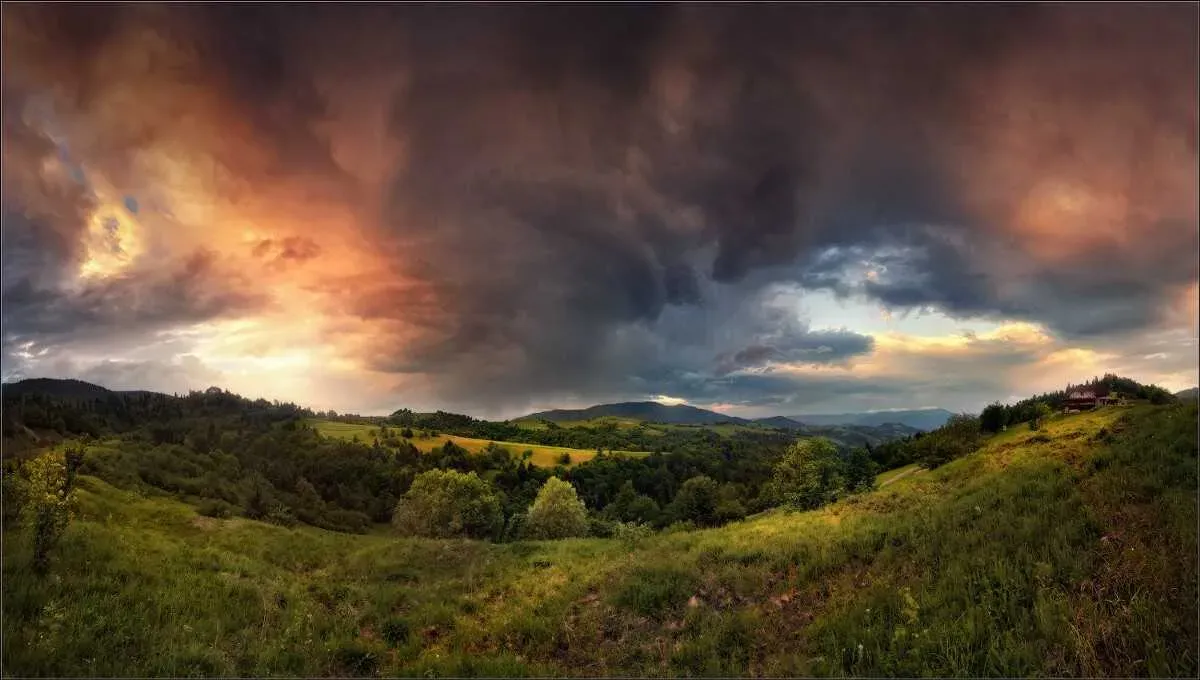
The ones I use fairly often are neutral density filters by B+W of a usual round shape: ND8x and ND64x. I use them only to shoot water at a long exposure. Why? They reduce the amount of light on the matrix.
If you ask me which exactly filters you need, I’d say that it’s up to you and it depends on your goals and subjects. Don’t forget that filters can be also overlapped, in which case the amount of light on a matrix greatly falls which leads to a considerable increase of exposure.
The disadvantage of such a “sandwich” (a mix of 2 filters) is a possible appearance of a strong vignetting on wide-angle lenses. The inconvenience you may have when using filters of high density is a possible change of the white balance, and, under certain circumstances, it can be uncomfortable to frame, because you can’t see anything through a viewfinder (you have to focus without a filter, then put your camera/lens in a manual mode, put on a filter and only then push and release the shutter).
In general the topic of photographing at long exposure and using ND-filters is well explained by Cambridge in Color right here.
It’s hard to add something to their article except that, maybe, you don’t need to buy a so-called Variable ND (a filter which construction allows to change density values up to 1000).
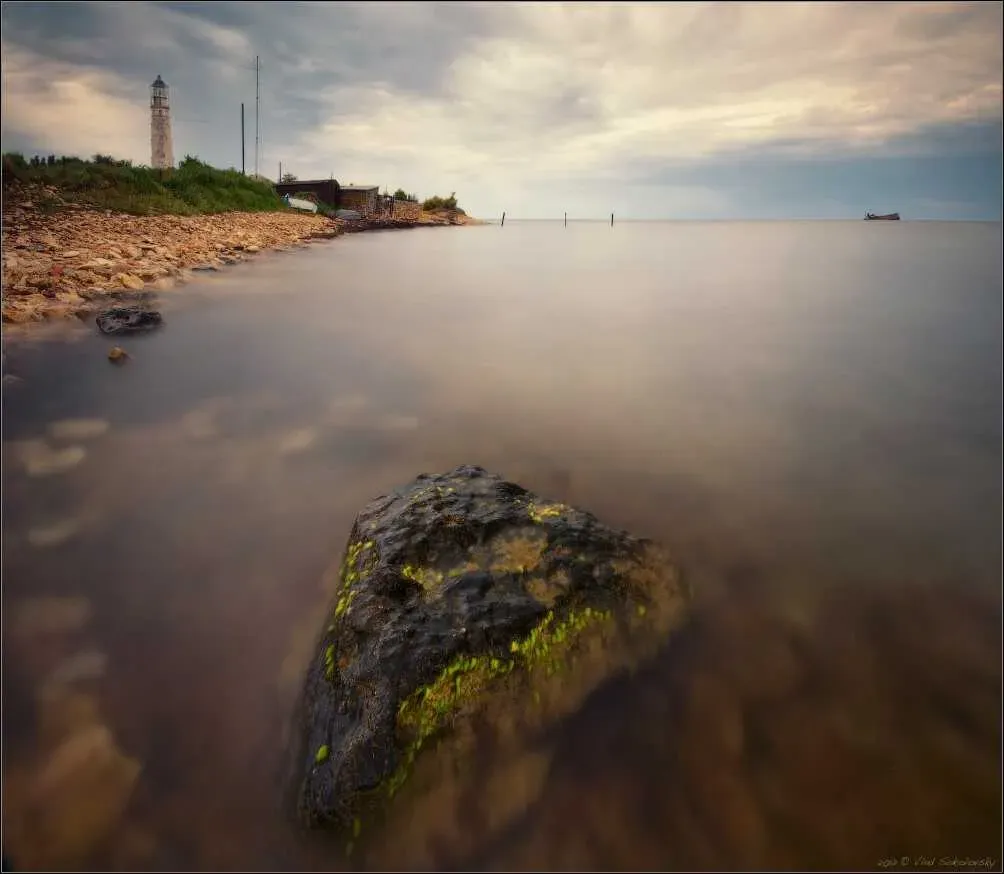
And the last filter on my list is a polarizing one (C-PL). I actually use it as frequently as I use ND filter. You can use a polarizing filter to remove splashes of light on water, and it beautifully emphasizes sky and clouds. This filter is also quite useful when making pictures in a forest. For example, you can remove splashes of light from the wet leaves. Taking into account the fact that a polarizing filter “eats away” one and a half or two exposure stops in some cases, you can also use it to get some blurring effects when making pictures of water.
As an addition
If I don’t plan to photograph water, I don’t have to remove splashes of light and I just need to emphasize the sky, then I prefer to put on a gradient ND filter instead of a C-PL one. Please, don’t forget that at super-wide angles the sky can be polarized unevenly: in the center you can have a darker area than at its borders. In this case a grey gradient filter is more convenient. It doesn’t produce such an effect. Well, and some inexpensive polarizing filters can do some harm to the shot color toning.
Are “color” light filters like SkyLight necessary? To my mind, not so much. In any case, after having used them for a while, I haven’t had a severe need in them.
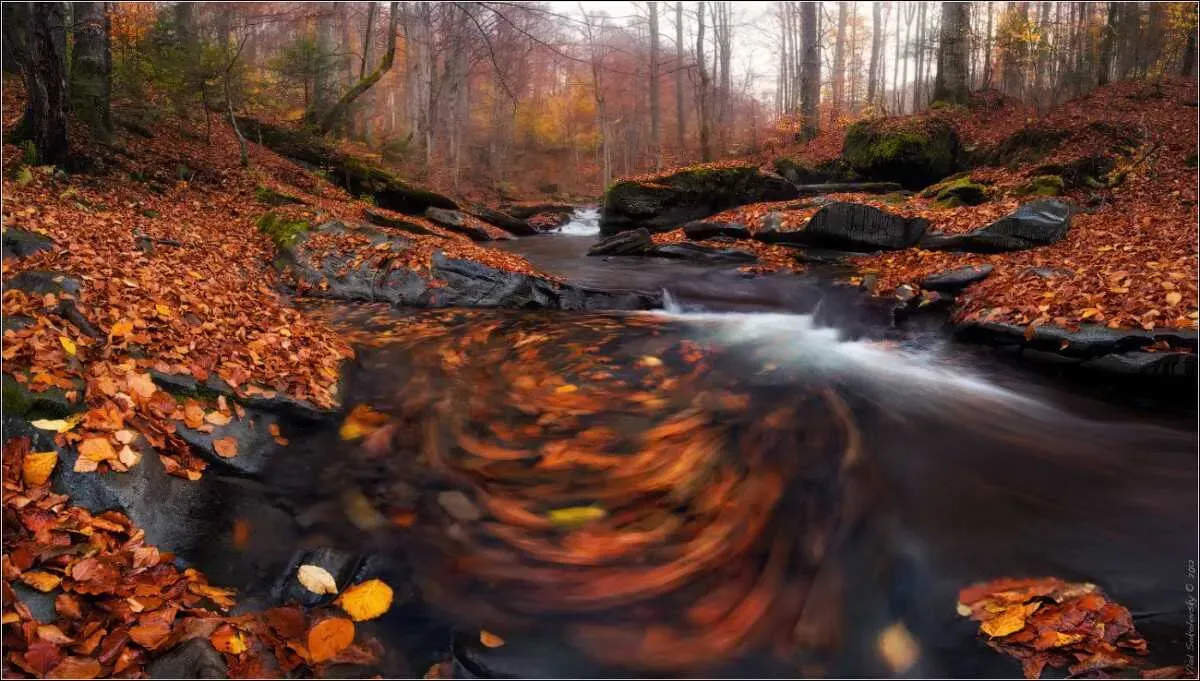
Do you need filters with a color gradient? No, in my opinion it’s not necessary. You can reach color rendering at the stage of post-processing very easily.
Can you run without filters and reach a similar effect with further processing? Yes, you can, but you won’t get a polarizing effect. It’s a good practice to have a microfiber rag to clean up filters. As you change them from time to time, you can accidentally touch the glass with your fingers. And such thing as a cleaning pencil LensPen won’t either take much space in your bag.
As a conclusion on equipment, I will give you some advice regarding bags (backpacks) for equipment and clothes.
Backpacks and clothes
My own experience shows that one bag is not enough. If you go on a photo trips to shoot nature numerous times, then yes, one bag is enough. But if you stay there for quite some time, if you go in the mountains, if you go cross-country, then it’s better to carry a backpack. It’s better due to different reasons: it’s more comfortable, load is equally distributed in comparison to what you would have to endure if you had all the load on one shoulder.
Of course, your bag and backpack should be in a good quality and waterproof — nobody knows how the weather can change. And in my opinion, it’s very uncomfortable to have to use a cover for a bag. Actually, I stopped using it long time ago (except when it rains really heavily).
About clothes: nothing will be able to replace a cheap Chinese oilskin raincoat that weighs just 3,5 ounces. It can lay around useless for 1, 2 or 3 months, but one day it will boost your mood when it suddenly starts to rain. It’s clear that it’s good to have well-thought clothes for tourism to go cross-country, but it’s up to you what to put on. I can just say that it’s sometimes hard to get rid of spikes on your clothes.
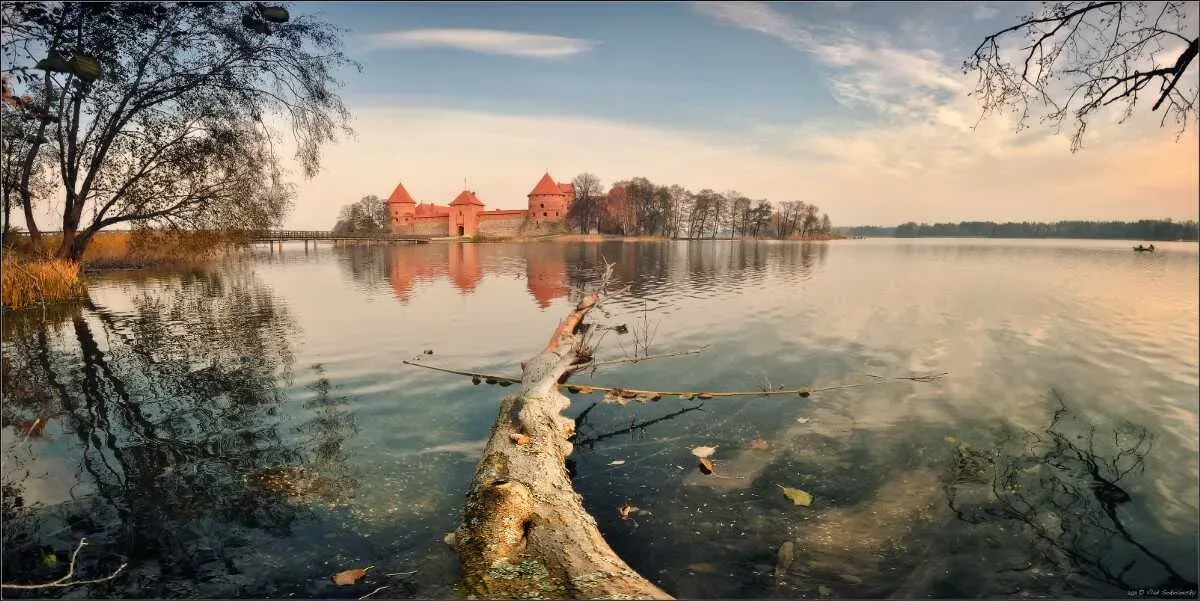
In conclusion, I can’t help mentioning shoes. To my mind, a necessary accessory is a good pair of boots. I have two pairs: short and long ones (with a soft top that you can tuck up and tie if you don’t need it), and they are always in my car, together with a tripod.
I don’t go anywhere without my boots. And I can say that I chose not to wear them several times and was “punished” for that: in winter my leg once sank in water at minus 20 degrees, and my car was quite far away. So I was shooting and freezing... Another time when shooting on the outskirts of Trakai castle (which is in Lithuania) and I trusted my friend who said that I didn’t need boots. Finally, I liked several perspectives of the castle, but I was shooting one of them at the risk of getting my feet wet as I had to climb a tree lying in the water. And I loathed the thought of getting my feet wet as it was autumn.
// This is an article from the PhotoCASA magazine, originally appeared in Russian. Stay tuned, we’re going to publish even more articles by Russian, Ukrainian and Belarusian photographers.
This wonderful material is written by Vladislav Sokolovsky, landscape photographer from Belarus. Contacts: http://photocentra.ru/valdis
Personal website: http://fototour.by (in Russian) //




